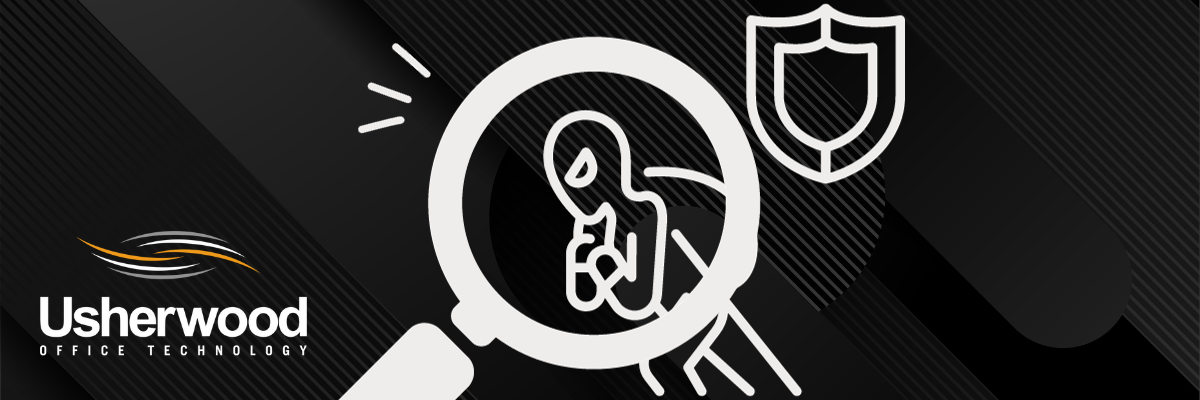How to Tell If Your Data Has Been Leaked to The Dark Web: Dark Web Scan
The Dark Web can be a very scary subject for business leaders, as it is largely shrouded in mystery. Do cybercriminals know your personal information? Are they sitting on data or valuable assets that could do harm to your business? To some degree, there is now a way to find out the answer to these questions.
IT experts can now use dark web scanning tools to find out if your passwords, credentials, and other data are circulating the dark web. This can be a powerful tool in your detection and response strategy for cyber threats.
How Data Gets Leaked
There is a growing market for buying and selling stolen data on the dark web. Criminals will offer their hacking services for a fee, and they will exploit vulnerabilities in companies to steal sensitive data. They may have already stolen this data, and they list these data sets for sale. Sometimes, they’ll even post them on public forums with social justice or political motivations.
These sellers are often highly talented hackers who exploit small loopholes in business networks. These might include open ports that act like unlocked doors into your system. These can also be found by an IT professional via vulnerability testing.
What Hackers Can Do with Your Data
You may wonder what could happen if your data is already on the dark web. When criminals buy or access your sensitive information, they can plug credentials into staff or customer login portals to access accounts. They often use personal data in a practice called social engineering. This refers to cyber attacks by which criminals pose as someone else to trick victims into letting them into networks, sending money, and other desirable actions
Social Engineering, Phishing, and More
There are more phishing, smishing, vishing, and other social engineering cases seen every year. Phishing refers to spoofed emails sent to unsuspecting inboxes in hopes of accessing sensitive data.
Vishing is a similar tactic, but most often appears as spam phone calls. These involve threat actors attempting to create urgency for you to do something while on the phone with them. Like phishing and vishing, smishing utilizes SMS inboxes to achieve the same outcome.
These scams involve a few basic attributes, including tactics such as:
- Inventing dire circumstances that require immediate action
- Using names, personal information, and even AI-generated voices of loved ones to appear genuine
- Encouraging victims to transfer funds via non-traditional means, like buying gift cards or wiring money
- Manipulating emotions and human instincts in any way possible
To read a real-life example of a vishing scam utilizing AI, read our article: PA Attorney Targeted By Vishing Scam with AI Social Engineering, Describes Lessons Learned.
Credential stuffing
One form of cyber attack that can happen due to stolen data leaked to the dark web is credential stuffing. When threat actors have access to usernames, passwords, and other credentials, they “stuff” them into login portals en masse.
This type of brute force attack involves plugging in as many compromised credentials as possible into one database or login page. This is designed to increase the chance of successfully getting into someone’s account. Once they’re into the network, they can cause all kind of havoc and damage to your business.
Ransomware and Other Kinds of Attacks
After cybercriminals exploit stolen data or trick victims into letting them into a network, they can inject malware into their target system. This can often look like ransomware, a type of virus that holds data hostage until a ransom is paid. Denial of service attacks are a different variation, which shuts down essential systems needed for businesses to function.
A recent example would be the cyberattack on MGM, a casino and hotel company in Las Vegas. Cybercriminals shut down hotel networks, slot machines, and communications systems, so staff were in the dark. The company lost money but refused to pay the ransom, eventually gaining access to their system again.
Dark Web Monitoring Tools Can Set You Up For Success
A dark web scan will find leaked data such as passwords and usernames that are on the dark web. Awareness of vulnerabilities like compromised data is crucial for setting your business up for proper cybersecurity protections.
For some industries like healthcare and legal, there are already strict rules for patient and client data protection. However, governments are cracking down on minimum cybersecurity requirements for all businesses. The consequences can be huge in the event of a data breach. A New York-based home healthcare company learned this when the New York State Attorney General fined them over $300,000 for their negligence towards cybersecurity.
How to Get a Dark Web Scan
Dark web scans are often free and easy to get. Managed cybersecurity companies will offer these scans to demonstrate the value of security monitoring services in eliminating cyber vulnerabilities.
If you’re interested in getting a free dark web scan, click the link below to speak to a team of experienced cybersecurity experts. Through this unique tool, you can begin to understand your risk of cyber breaches and find out if you’ve already fallen victim to one.



